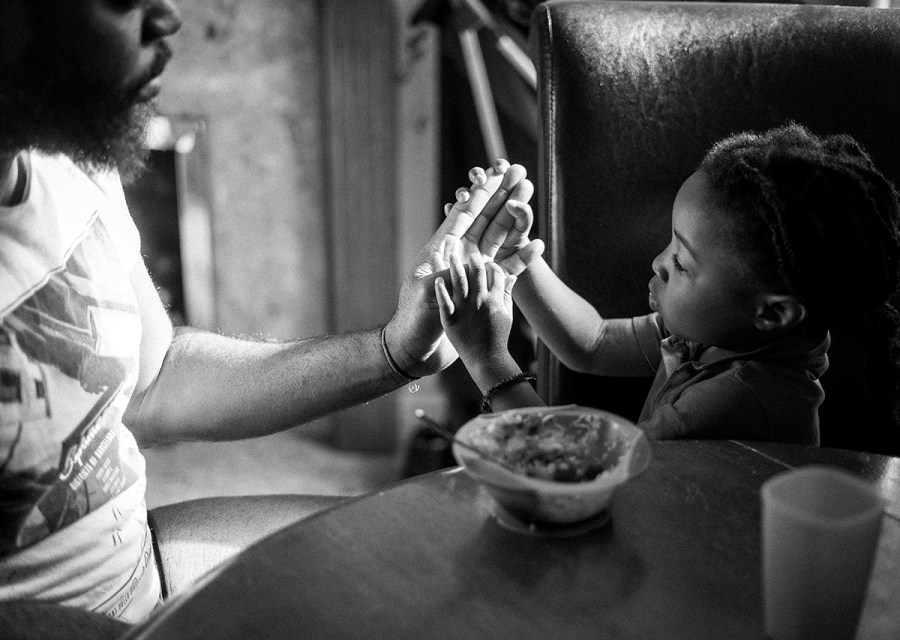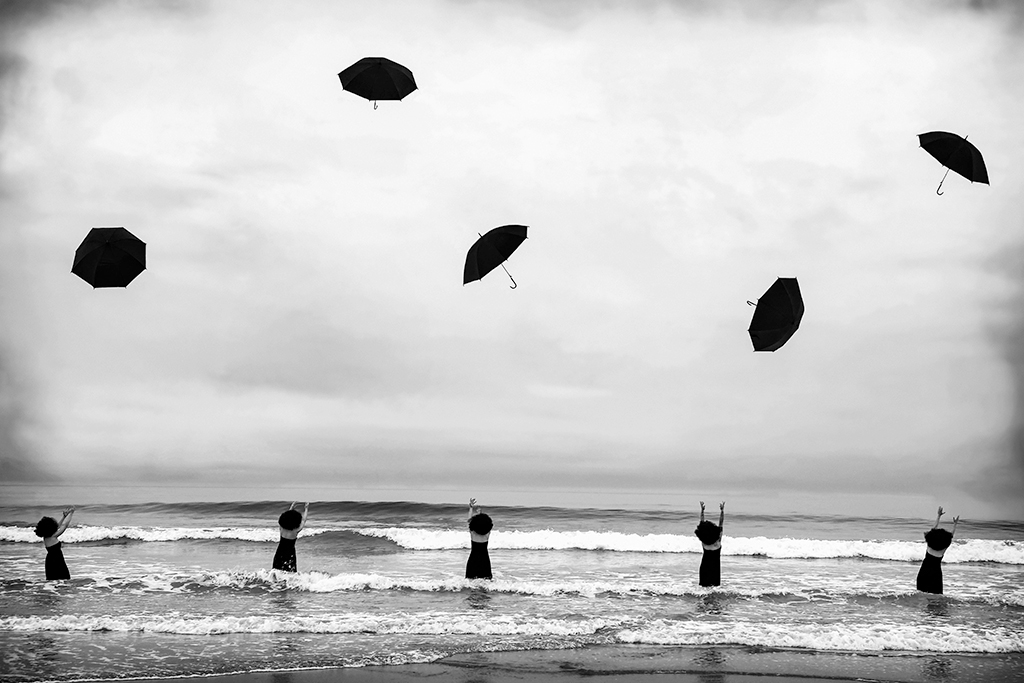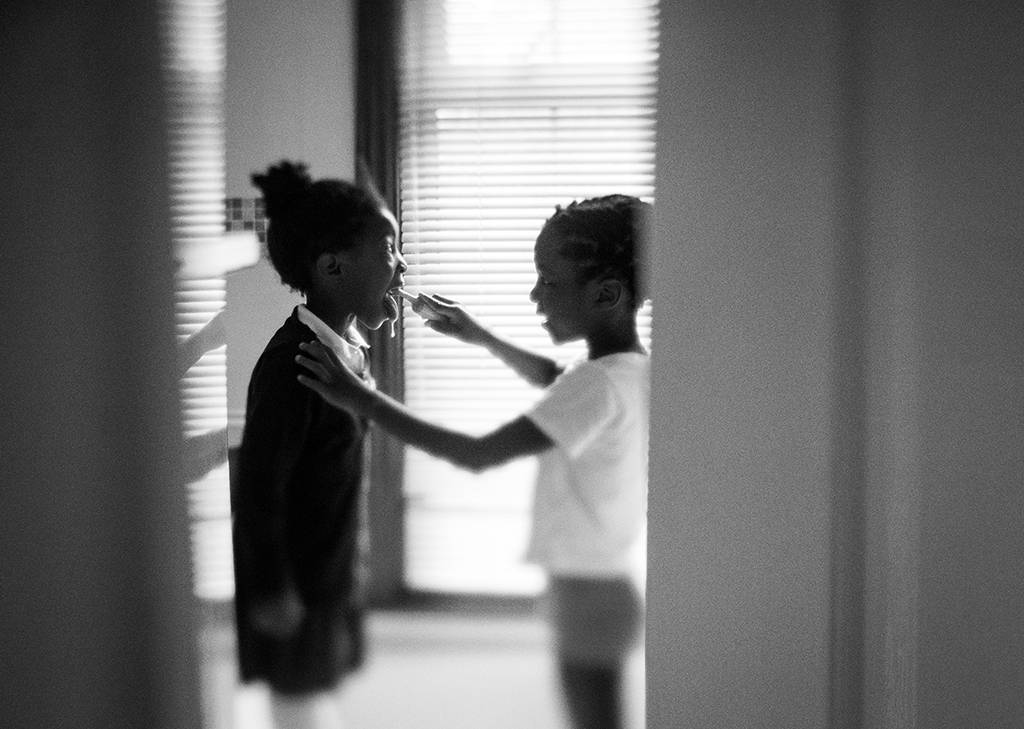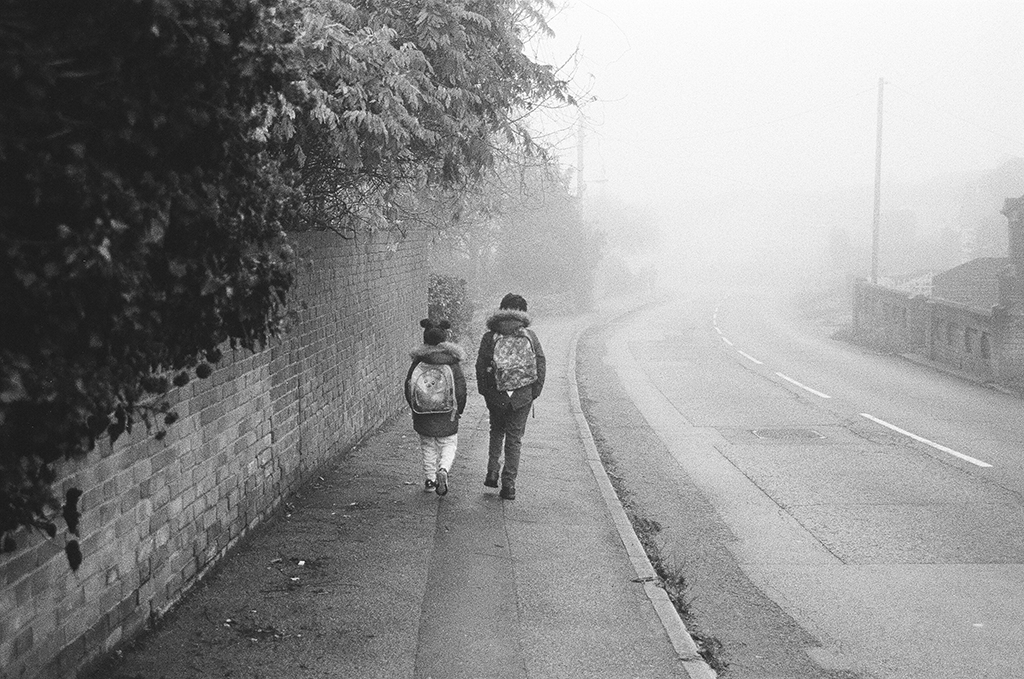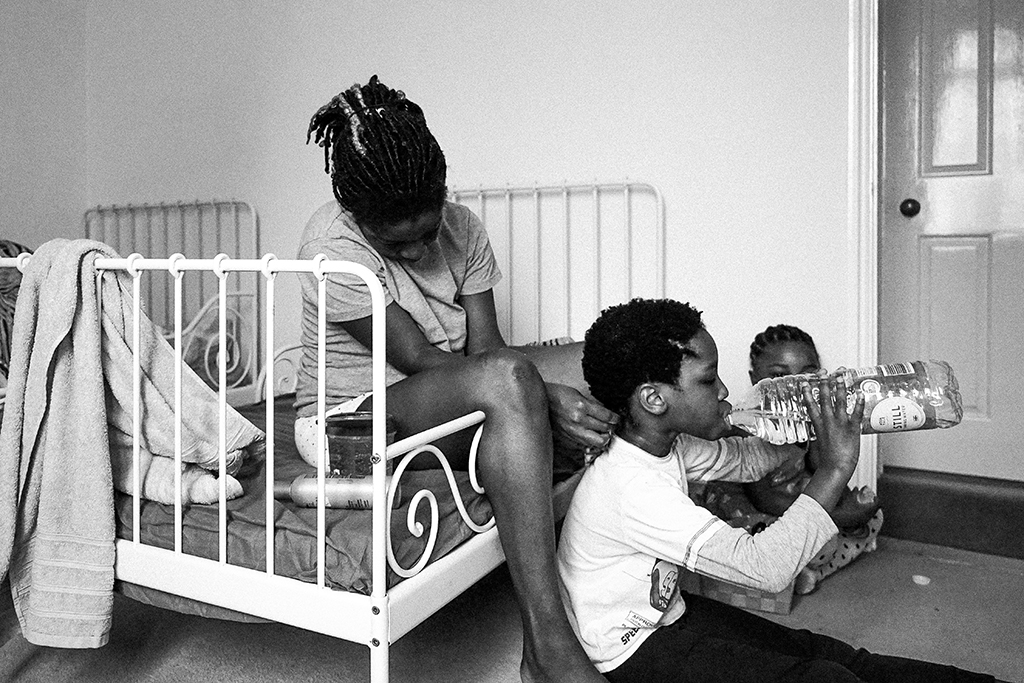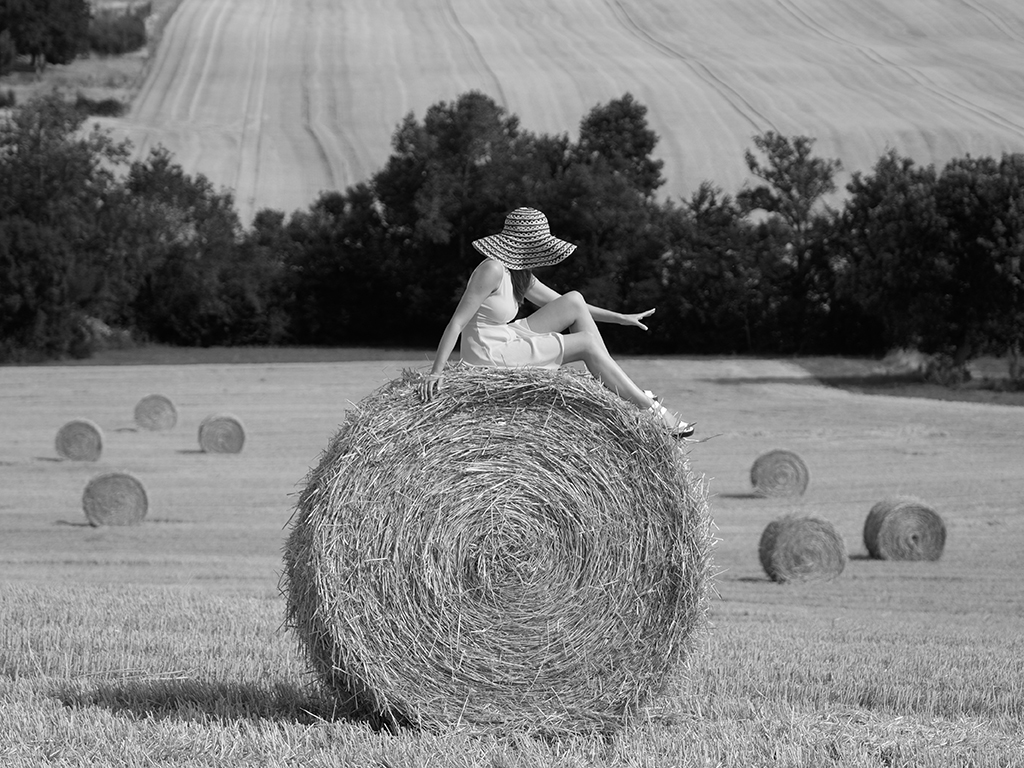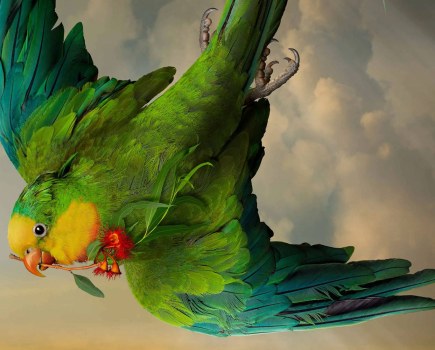Monochrome strips back distractions and reveals so much about a person. Claire Gillo gets inspirational tips from three eminent black and white portrait photographers
Marjorie Salvaterra

Marjorie Salvaterra is an artist who lives in Los Angeles, California, with her children and husband. Her work focuses predominantly on women and their role and experiences in society. Find out more about her and her projects at www.marjoriesalvaterra.com, follow on Instagram @marjoriesalvaterra and on Twitter @HerSalvaterra
Marjorie Salvaterra’s work is intriguing, witty, personable and relatable all in one breath. You could spend hours looking through all of her images and still discover new meaning as her concepts are layered and interpretable. Marjorie uses the art of black & white photography to predominantly shoot portraits of women (these are often close friends) dressed in costumes and wigs.
Marjorie’s work resonates with those who are drawn to artists like Cindy Sherman and Sally Mann, and her concepts mostly focus on women and the experiences and pressures they encounter in life. When asked why she uses the black & white medium to communicate her ideas she replies, ‘I see things in black & white. I’ve always loved black & white photography. I think it’s just what I’m drawn to. I think it’s amazing for storytelling, because it leaves things more open for interpretation.’
Born to shoot
Despite not picking up a camera until her 30s Marjorie found she had a natural affinity for the medium and has always been a storyteller. ‘I was writing before I was doing photography, and it’s sort of the same world to me,’ she says. Marjorie admits she is not a technical photographer (although learning all the time), however that doesn’t seem to stop her getting picturesque and striking results with her Sony Alpha 7R II.
To find the perfect locations for her photo shoots Marjorie uses what is available on her doorstep and luckily for her she lives in a beautiful part of the world. ‘Because I’m a full-time mom I use places close to me,’ she says. ‘Although I have travelled a little, like six hours up to Mammoth Mountain for the trees and to Death Valley for the salt flats.’ Unfortunately Marjorie suffers from travel sickness and so finds car journeys to be rather unpleasant.
‘I’ve got to confess I’m not a huge outdoorsy person but I love the salt flats. It’s just magnificent what the ocean left behind at one point.’ When it comes to creating a series Marjorie does the majority of her work in her head. ‘I usually try to work from the inside out waiting for the images to come to me,’ she tells us.
Authenticity is also important for Marjorie and she will abandon a series of work if it doesn’t feel right. ‘I call it my B side when that happens,’ she jokes. ‘The teacher I learnt from worked with Berenice Abbott – she was her apprentice and Berenice used to say, “You have to always be working on a project that you’re excited about, that gets you out of bed in the morning.”’ Marjorie finds this a good ethos to follow.
Although Marjorie has a planned idea for what she wants to achieve before each photo shoot, she also leaves room for spontaneity. For example on her project ‘Her’ Marjorie was setting up a group nude scene. ‘First, everybody gets naked, and I say, ‘Wait, is that like a thing now – nobody has pubic hair any more?!”
To create a tongue-and-cheek image from this encounter Marjorie gets all the ladies to remove their big fake bushy wigs from their heads and place them over their lower private parts. The image is called ‘The Politics of Being Real’ (see image at bit.ly/3rL6Bm4). When asked if humour is an important element to her images she replies, ‘Yes, because when things get so crazy, we have to laugh. Laughter is relaxation, and then you can tell the other parts of the story. You can draw people in.’
Marjorie’s top tips for black and white portrait photos
- Wait for the moment. Don’t click click click click. Shoot as if you’re using film and it’s expensive.
- See the world differently. Whether you have to stand on your head, be up against it or a thousand feet away, you want to see it differently from everybody else.
- Know your backgrounds. Because you don’t want to have this great shot with a tree coming out of somebody’s head. The background is as important as the subject.
Iko-Ojo Mercy Haruna
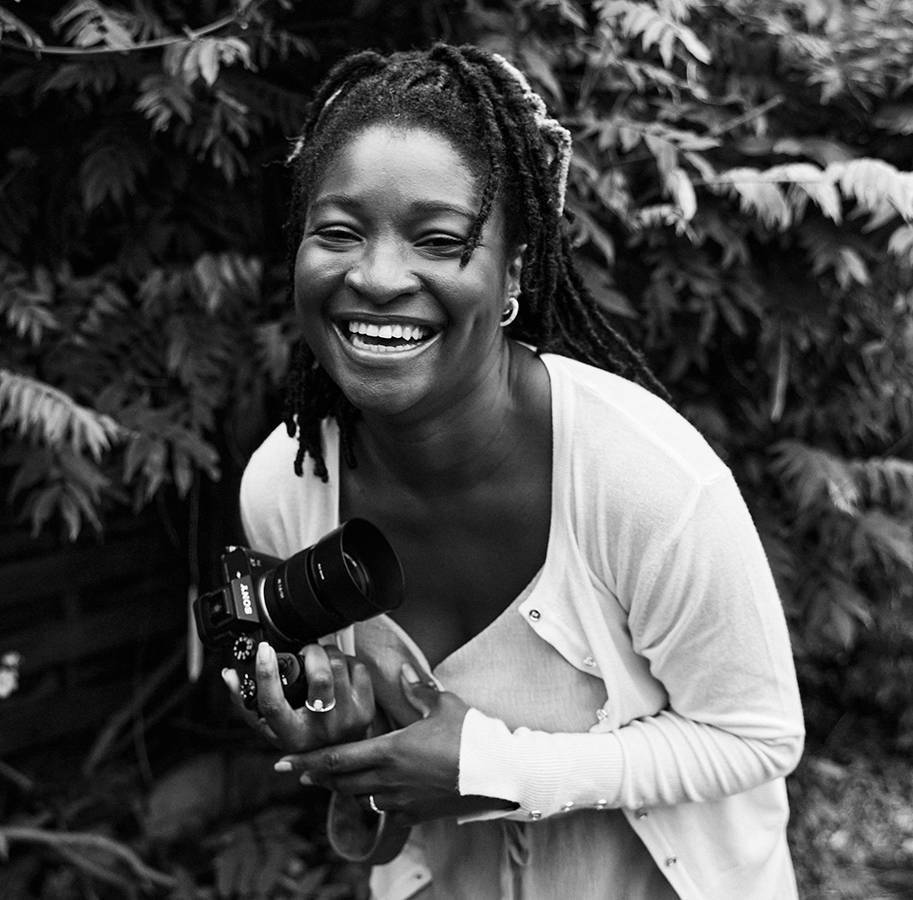
Iko-Ojo Mercy Haruna, known as Mercy, is a Kent-based visual artist and documentary photographer dedicated to capturing the fleeting moments of family life as well as those that dive into the deeper conversations about the realities of motherhood. Find out more at
www.imharuna.com and follow on Twitter and Instagram @immeiko
Mercy started her project ‘This is Home’ to simply document her family’s daily life in and around their home in Kent. ‘I’m inspired by the kinds of photos I wish I had of my own childhood if my parents had owned personal cameras,’ she tells us. ‘I capture the fleeting, everyday moments between the milestones we’re accustomed to recording.’
Mercy began this project when her children were three and one – they are now five and eight. ‘My intention was to continue for as long as I can but I’ve noticed in the past year, it’s getting harder to photograph us the way I used to. My eight-year-old doesn’t enjoy being photographed as much and our lives are busier,’ she explains.
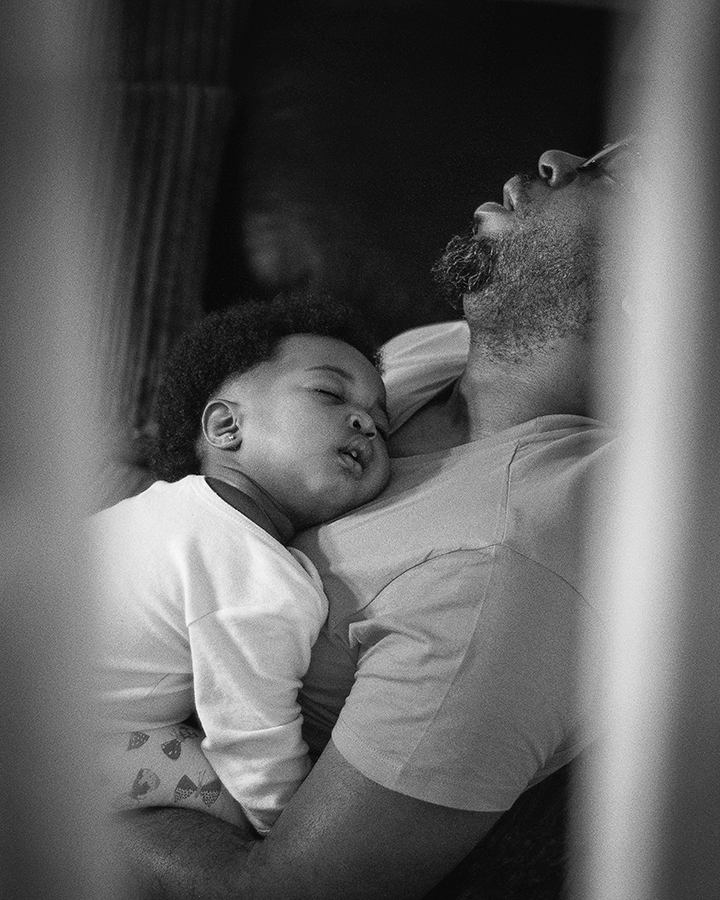
This image is one of Mercy’s favourite images from her collection and is of her daughter sleeping on her husband’s chest
‘Maybe over time the project will evolve into something else, but I will definitely need to continue to be intentional about making the images, printing and archiving them.’
In her kit bag she has the Sony Alpha 7R II and a Sony FE 50mm f/1.8 50mm and lately, she’s also been using the Zeiss-Batis 25mm f/2 to get more of the environment into her portraits. ‘I also always have my Canon EOS 300X and a roll of Ilford HP5+ in my bag,’ she reveals, however Mercy is not bound by worrying about what device she uses. She will grab whatever is closest to hand (DSLR, mirrorless, analogue or phone) freeing herself of limitations as she describes it, and ensuring she can capture the moments as they unfold.
It just works for me
For Mercy, capturing her family in the black & white medium has been a transition from when her photography journey started on black & white film. ‘It just stuck with me,’ she says. ‘It has really defined how I see the world. It also appeals to the minimalist in me, and helps me distil the focus down to the exact moment or story I’m trying to tell.
‘Unless colour is significant to Mercy’s story, she almost always prefers to see photographs in black & white. ‘I also love black & white for the simple and nostalgic feeling it creates. It just works for the kind of stories I like to tell! It also helps to keep the series coherent, considering I use different kinds of cameras.’
Mercy’s documentary approach to family portraiture means she doesn’t pose or direct the scene. ‘The first element I look for is the moment or story unfolding. I love to capture what makes every family unique.’ Mercy confesses there is nothing better than real life and even moments like a child throwing a tantrum is perfectly fine, ‘it’s all part of the unique story’, she explains.
‘I am also drawn to interesting light – a balance of highlights and shadows and artful illumination of the subject. That could be light streaming through a window, a spotlight from a mobile device or lamp, harsh sunlight casting striking shadows, or a foggy scene.’ Mercy’s images from her This is Home project are currently being shown at the Moments in Time exhibition at Free Space Project until 30 May 2022. Find out more at www.freespaceproject.org.
Mercy’s top tips for black and white portrait photos
- Shoot with black & white in mind. Practice seeing in monochrome by using the black & white profile on your camera, if it has one.
- Focus on the story and interesting light.
- Don’t worry about perfection! Low light and grain is part of the charm of black & white portrait images.
Damien Lovegrove
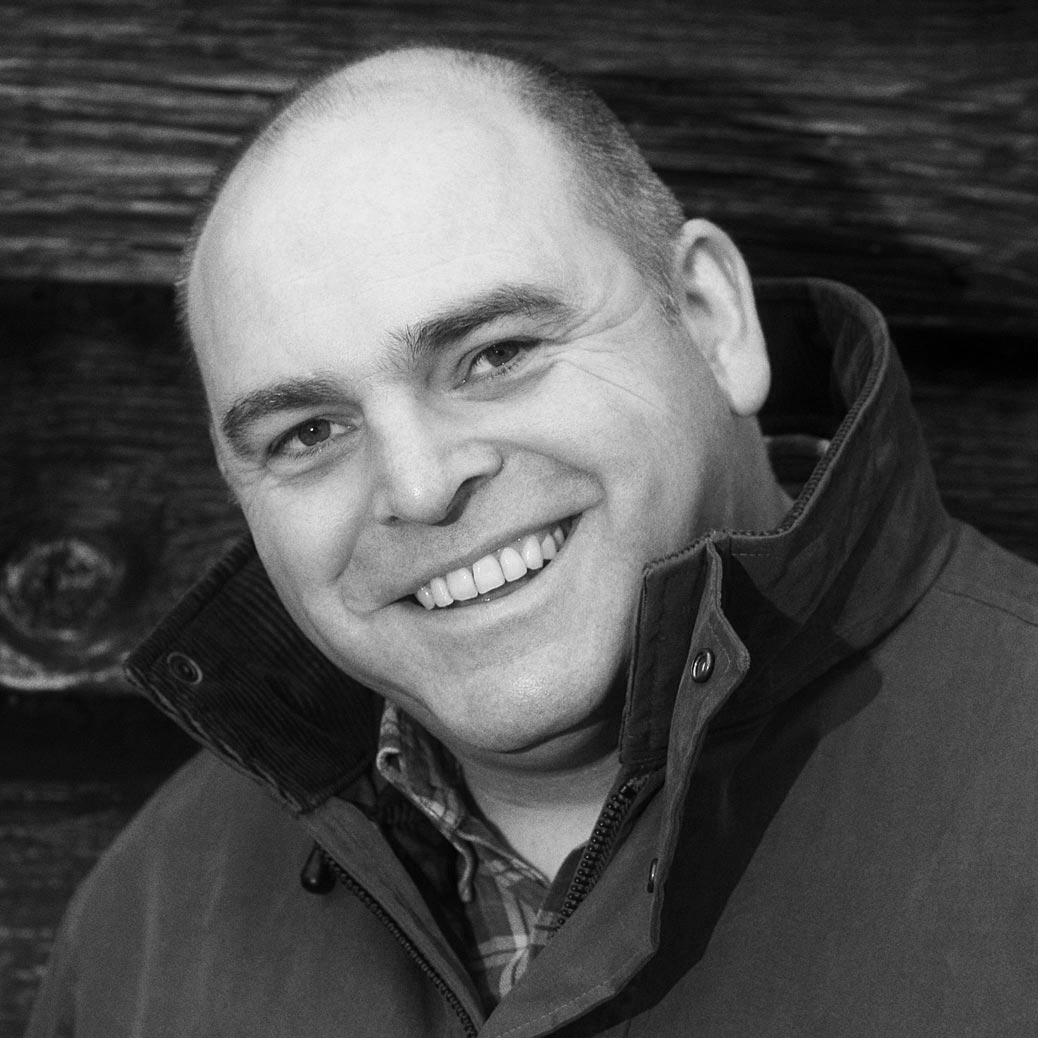
Damien Lovegrove is a photographer best known for his location and studio portraits of women. He finished taking on client commissions in 2018 and now concentrates on personal work, workshops, books and teaching videos. You can learn more from Damien on his YouTube channel at www.youtube.com/c/LovegroveTraining and follow on Instagram @damienlovegrove. www.lovegrovephotography.com
Photographer Damien Lovegrove has much experience when it comes to shooting portraits in the studio, however it is when he is out and about on location that he feels most inspired. ‘The world is my studio!’ he jokes. ‘I’d rather be out in the real world, and photography has given me the opportunity to do that.’
Damien is an advocate of the black & white medium and explains why. ‘I find it really useful for making punchy pictures,’ he states. ‘But I also like the opportunity to remove distractions and to simplify the picture. It’s one step closer to art in a lot of people’s eyes. That can be useful when you want a picture to be considered a piece of art as opposed to a record of a scene.
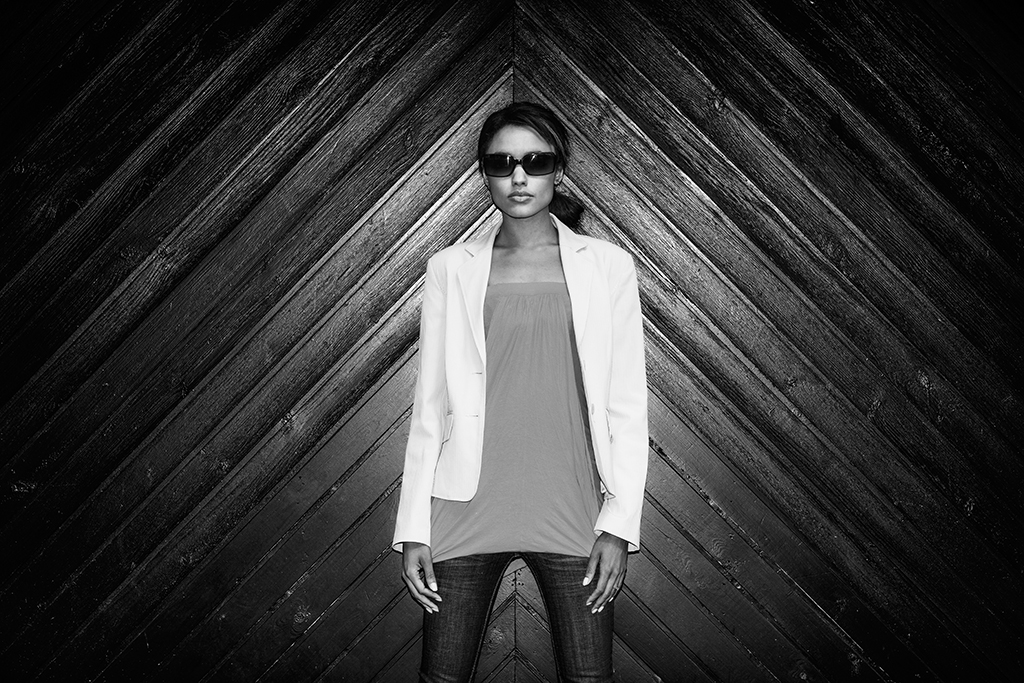
Textured gloss painted backgrounds like this garage door make an excellent setting for a black and white location portrait
We see the world in colour, and so black & white is a big distortion, but because black & white photography has existed for so long we have accepted it. We think it looks natural.’
For the previous five years Damien has been shooting on a medium format Fujifilm GFX 50S II although he states what camera you use is irrelevant. ‘A good lens is more important than your camera; however even more important than that is your eye.’
Simplicity is the key
In his kit bag Damien likes to keep things simple. ‘I have a short telephoto and a wide angle,’ he says. ‘I need those two lenses and they are equally important. Some of my work is placing the person in the environment, so I use my wider lens to reveal the narrative,’ he continues. ‘But then to focus on the beauty in more intimate pictures I use my short telephoto lens.’ He explains that with his short telephoto lens he is able to capture more flattering facial features.
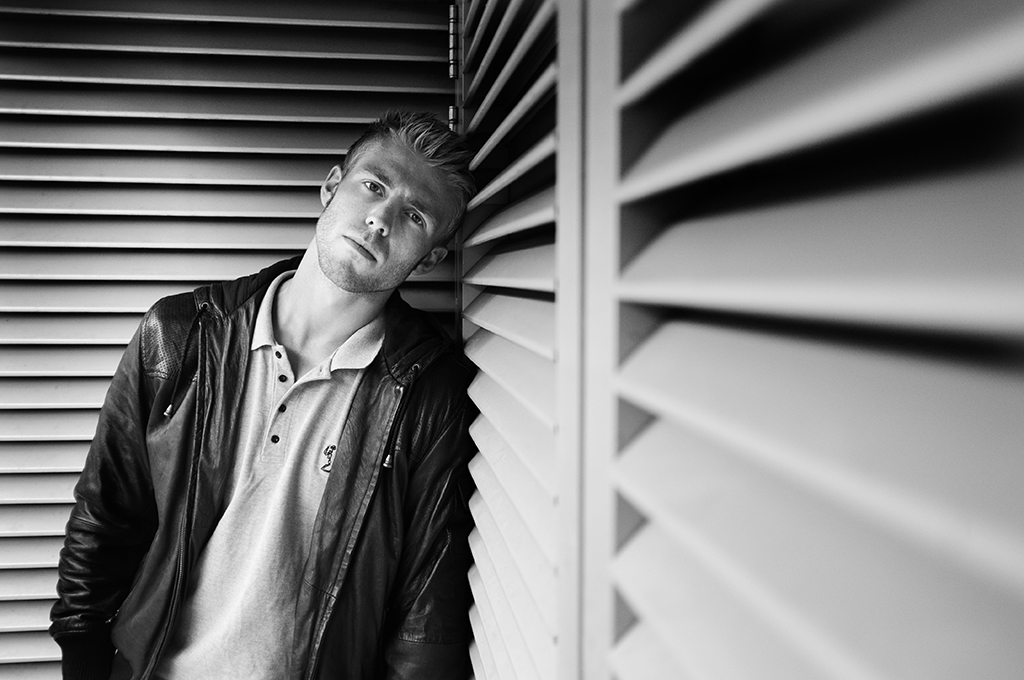
Look for elements in a scene such as these hot air vents in an urban environment to make your monochrome portraits pop
When it comes to choosing the right locations for his monochrome portraits Damien is full of sound advice. Take for example his image of the girl in front of the textured chevron doors. ‘Black glossy paint on a surface looks great,’ he says. Damien carries on to describe how the gloss paint flicks back the flash to the camera to create the intense effect.
‘You have to get the camera down quite low so the hotspot of the flash is directly behind the person. And that’s partly the reason for the central position of the model in this image.’ Damien has further advice when it comes to finding locations and advises in the urban environment to hunt around the back of modern office buildings for elements in the scene such as air vents.
‘This type of location is great because first it is not monitored with CCTV, so you’re not seen as a security risk, and there is no one around to get in the way.’ In his image of the man resting his head against the vents Damien confesses to not having what he would call the ideal light conditions. ‘The light is coming up predominantly from the ground and normally that’s a real no-no because it makes people look scary, but here it feels right. So just bear in mind that sometimes the rules are there to be broken!’
Although Damien is highly experienced when it comes to shooting with artificial lighting, he states that you don’t need to have lots of fancy kit in order to get great results. In his close-up portrait of the girl he tells us that it was taken on the edge of a woodland. ‘When you get to the edge of the woods, you get this lovely horizontal letterbox of light,’ he reveals.
‘In this picture, there was a small clearing where one tree had collapsed and left a hole in the canopy. That clearing just gives a little bit of light at the back. This style of light is available in the real world – you’ve just got to know what to look for.’
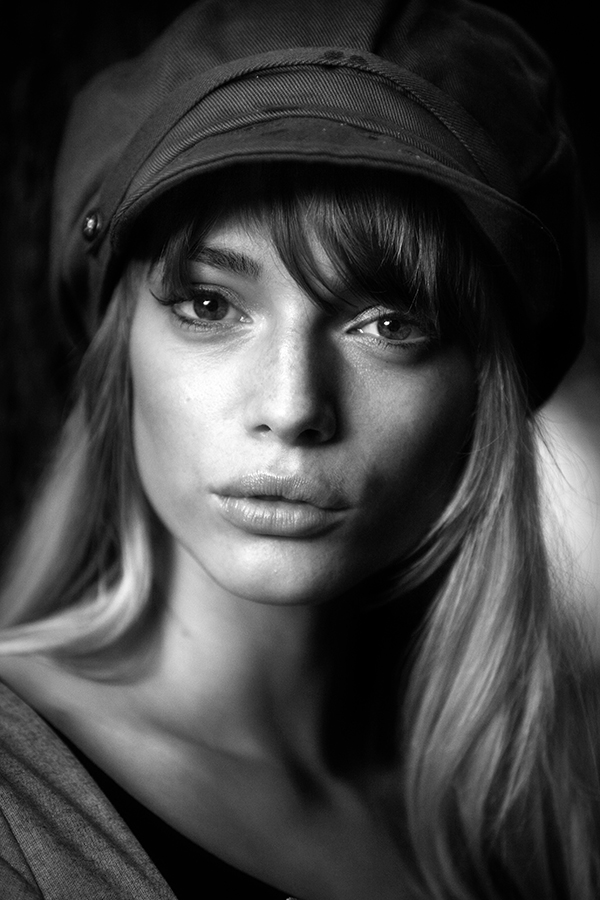
This black and white portrait was taken at the edge of a wood where a gap in the trees created the perfect natural light
Damien’s top tips for black and white portrait photos
- Take portraits for yourself. If you like them, that’s all that matters. Damien only shoots images for himself now.
- Planning pays off. Explore and find locations before your shoot. Keep the GPS switched on when snapping recce images (do these on your phone) to easily locate locations again.
- Keep it simple and your bag light. Damien switches between two lenses – a wide and tight angle and that’s it.
Further reading:
Amateur Photographer of the Year 2023 now open! Round one: Black and White
Tips for black and white photography

